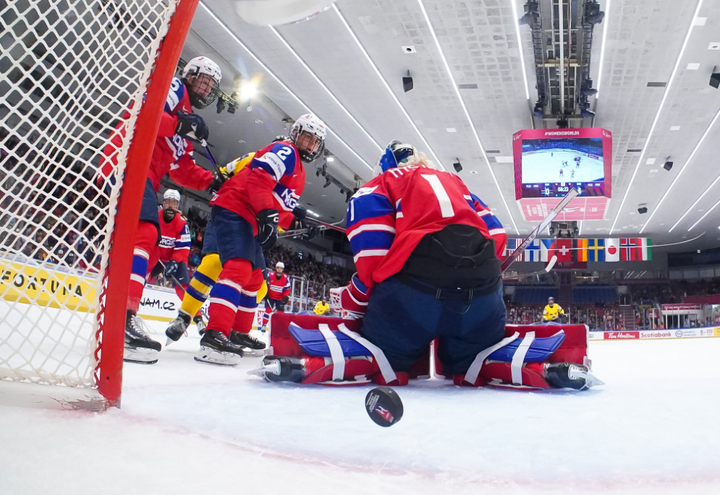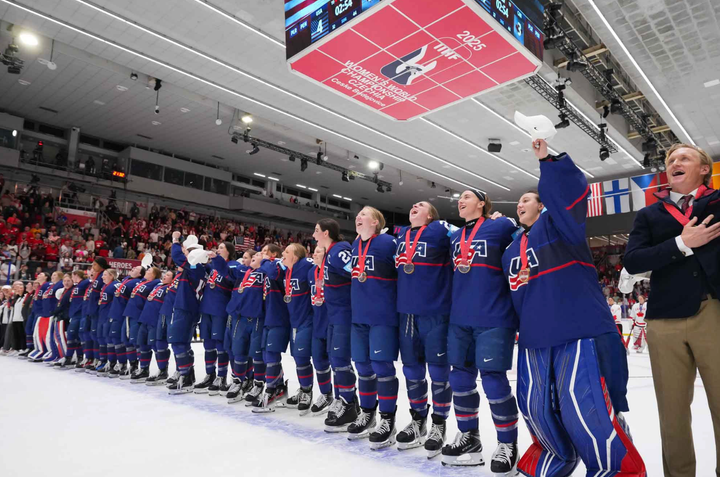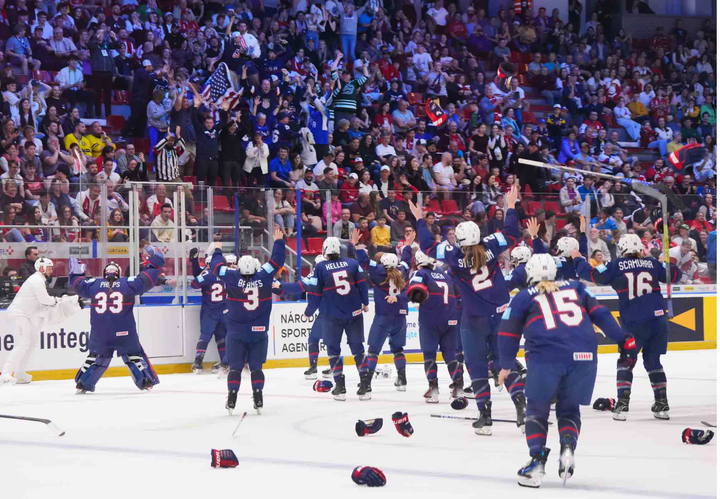Q&A with PWHPA’s Jayna Hefford
The organization is one year old today.
Exactly one year ago today, the Professional Women’s Hockey Players Association was announced.
In their first year of operation, the organization held a six-stop Dream Gap Tour in addition to numerous regional games and clinics.
We talked with Jayna Hefford, via phone, about the organization’s first year and what the future looks like. As a note, this interview took place before the announced changes for the upcoming season.
The Ice Garden: What would you call the biggest success of the PWHPA in the first year?
Jayna Hefford: I think the biggest success would be the unity within the group. It’s obviously a large number of players; we were at about 180 players last year. Being able to keep that many players on board, engaged, interested in still wanting to be a part of it and share our message — I think that’s probably the greatest success.
TIG: What was the biggest learning curve you think the organization had?
Hefford: I think that there’s probably a lot there. Coming into the situation from the CWHL to a Players Association is a little bit different. We have a nine-player board so we have nine players — actually one’s a former player — but they are incredibly active and engaged and working, spending a lot of time on this so I think there’s a big learning curve from that perspective.
My role was really kind of a little bit of everything. A little bit of partnership, a little bit of event planning and communication with the membership, kind of get my hands in everything so I certainly learned a lot. The strategic process that we’re trying to implement now [is different] from last season. I wasn’t even there at the beginning, but [the PWHPA] came together so quickly with very little time to strategically make decisions that impact the organization. Having that time now, I think] we’re learning how to use that more effectively.
Related
Jayna Hefford named Operations Consultant for PWHPA
TIG: So you kind of mentioned your time with the CWHL little bit. How did that experience lead into your time with the PWHPA? What did you take from that and give to the PWHPA?
Hefford: I learned a lot about the economics of women’s sport and the challenges of running a global league with very little resources ... I think I’m proud of the successful season that happened. Obviously it didn’t end well, we had to close the CWHL, but the success we were able to achieve I think was instrumental.
The players came and asked me to head up the PA. I think that was significant because I think it validated that they believed that the game was going in the right direction and there’s reasons why it couldn’t continue on that model. But I think they saw the potential in what we were able to do, and I think that they know I’ve always been involved and trying to make it better for the players.
Some of them are our friends, some of them I played with, some of them I’ve never played with, but I still feel like I’m attached to the the years I spent playing and and the experiences I had as a player. I played in three different leagues over the course of my 17-year club hockey career. I went through the ups and downs of many leagues starting and closing so I think they trust that I have the best interests of the players in mind. There’s also the things I learned on the business side, which has been helpful in how we are navigating the current scenario.
TIG: Let’s pretend like it’s a pre-pandemic world. How much has the PWHPA planned for your next season. Will we see another Dream Gap Tour?
Hefford: We felt we were in a really good place coming into this season and had some really exciting things lined up. Obviously when everything happened, everything kind of went on pause so I can’t say that we actually know exactly what it’s gonna look like. But yes, we’re planning for another Dream Gap Tour, hopefully bigger and better with some exciting things that we can add in that are a little bit different.
We felt like it was very successful but we also learned a lot. We learned ways that we can do things better and differently. So, yeah, [we are] looking forward to sort of building on that success. Some of the elements of what we can do are still to be determined when we come out of this situation and seeing where everybody, the partners and different people that it would all be apart of it, is.
I think it’s just around trying to do everything better and hopefully bigger, engage more people, play more games. We’re taking all of those elements and that feedback we got from our players and trying to build on to each one.
TIG: Speaking about your membership, a new class of players are graduating into a post-collegiate women’s hockey world. Many of them will be looking to join the PWHPA. Can you explain a little bit about how new players would go about joining the PWHPA or what kind of pipeline you guys have?
Hefford: We did host some informational webinars for players who didn’t understand who we were, what we do and and really just wanted to educate people on what we do. So we reached out to college coaches.
We are making some changes again, back to the feedback that came from our players and how we could make this whole experience better. We’re trying to take each of those as individual pillars, and build on those. We are making some changes that will make us look a little bit different from the outside.
Related
PWHPA details a new structure for 2020-21 season
TIG: I want to forecast out even farther than next season. Again, obviously, the pandemic changes so much of this, but the PWHPA’s core goal is a sustainable league where the players are paid living wages, and so are all the staff members, etc. Is there an ideal timeline you guys see forecasting out, or is it just more like an “as soon as possible” type of situation?
Hefford: We wish it were there tomorrow. So, I can’t say that the timeline because we haven’t been shy to say that we believe that a professional league would have to be aligned with an established league, so that you have that infrastructure in place.
We don’t know what that timeline is. It could happen tomorrow and we’d all be ecstatic. It could happen in one year, two years or three years. I think we’re in a position now, especially with what’s going on in the world, to really just focus on what we can do to to move our agenda forward and continue to build this message and help people understand why it’s important.
TIG: Obviously the NHL is the endgame here but is that the only endgame you see or do you also see possibly a league with private investors, like large-scale private investors getting involved?
Hefford: We would never say it has to be the one and only way but there’s a number of things that we’ve communicated publicly that should be involved in in a league. You already mentioned that the living wage, but the infrastructure of access to daily ice time, having marketing departments, ticketing department, PR, full-time staff and support staff, and health and medical coverage year round. All of that in good facilities and small things like having dressing rooms, towels, and supplies.
There’s a lot of elements that go into it and the easiest way to say it would probably be look at any other professional sport and how athletes are treated, not when it comes to salary, but the ability for them to be full-time athletes with that as their focus. When you travel or when you train, it’s done in a way to optimize performance. I think those are the areas that have been missing.
So, it’s a whole lot of things. If it were something other than the NHL would we consider it? Absolutely, if it had all of these things attached to it.
Portions of this interview were edited for brevity and clarity.





Comments ()